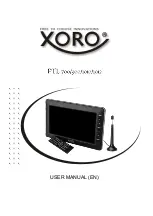
Remote Control Basics
R&S
®
SMJ100A
443
Operating Manual 1403.7458.32 ─ 14
6.1.3.1
HiSLIP Protocol
The HiSLIP (
Hi
gh
S
peed
L
AN
I
nstrument
P
rotocol) is the successor protocol for
VXI-11 for TCP-based instruments specified by the IVI foundation. The protocol uses
two TCP sockets for a single connection - one for fast data transfer, the other for non-
sequential control commands (e.g.
Device Clear
or
SRQ
).
HiSLIP has the following characteristics:
●
High performance as with raw socket network connections
●
Compatible IEEE 488.2 support for Message Exchange Protocol, Device Clear,
Serial Poll, Remote/Local, Trigger, and Service Request
●
Uses a single IANA registered port (4880), which simplifies the configuration of fire-
walls
●
Supports simultaneous access of multiple users by providing versatile locking
mechanisms
●
Usable for IPv6 or IPv4 networks
Using VXI-11, each operation is blocked until a VXI-11 device handshake returns.
However, using HiSLIP, data is sent to the device using the "fire and forget" method
with immediate return. Thus, a successful return of a VISA operation such as
viWrite()
does not guarantee that the instrument has finished or started the reques-
ted command, but is delivered to the TCP/IP buffers.
For more information see also the application note:
1MA208: Fast Remote Instrument
.
6.1.3.2
VXI-11 Protocol
The VXI-11 standard is based on the ONC RPC (Open Network Computing Remote
Procedure Call) protocol which in turn relies on TCP/IP as the network/transport layer.
The TCP/IP network protocol and the associated network services are preconfigured.
TCP/IP ensures connection-oriented communication, where the order of the
exchanged messages is adhered to and interrupted links are identified. With this proto-
col, messages cannot be lost.
6.1.3.3
Socket Communication
An alternative way for remote control of the software is to establish a simple network
communication using sockets. The socket communication, also referred to as "Raw
Ethernet communication", does not necessarily require a VISA installation on the
remote controller side. It is available by default on all operating systems.
The simplest way to establish socket communication is to use the built-in telnet pro-
gram. The telnet program is part of every operating system and supports a communi-
cation with the software on a command-by-command basis. For more convenience and
to enable automation by means of programs, user-defined sockets can be program-
med.
Remote Control Interfaces and Protocols
Содержание SMJ100A
Страница 34: ...Preface R S SMJ100A 18 Operating Manual 1403 7458 32 14 Notes on Screenshots...
Страница 86: ...Preparing for Use R S SMJ100A 70 Operating Manual 1403 7458 32 14 LXI Configuration...
Страница 139: ...Manual Operation R S SMJ100A 123 Operating Manual 1403 7458 32 14 Legend of Front Panel Controls...
Страница 140: ...Manual Operation R S SMJ100A 124 Operating Manual 1403 7458 32 14 Legend of Front Panel Controls...
Страница 454: ...Instrument Function R S SMJ100A 438 Operating Manual 1403 7458 32 14 Baseband Signal Baseband Block...
Страница 826: ...Remote Control Commands R S SMJ100A 810 Operating Manual 1403 7458 32 14 UNIT Subsystem...
Страница 828: ...Maintenance R S SMJ100A 812 Operating Manual 1403 7458 32 14 Storing and Packing...
Страница 843: ...Hardware Interfaces R S SMJ100A 827 Operating Manual 1403 7458 32 14 Figure A 2 BERT circuit diagram BERT Connector...
Страница 844: ...Hardware Interfaces R S SMJ100A 828 Operating Manual 1403 7458 32 14 BERT Connector...
















































